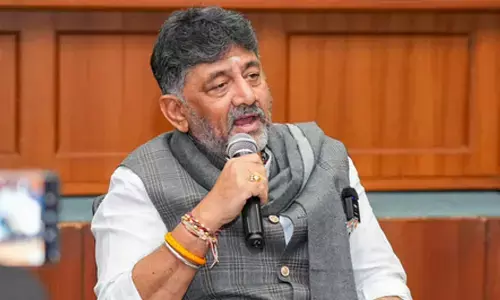Keep more capital buffer for your own interest: RBI ED to banks

Reserve Bank executive director Sudarshan Sen has exhorted banks to maintain higher capital levels than the regulatory mandate to see through business cycles and crises, warning those failing to have adequate buffers will get punished by the system itself There is a need to look beyond numbers like 8 per cent of risk weighted assets or 9 per cent, he said
Banks with capital will get going and those without it will be punished by the ecosystem.
Mumbai: Reserve Bank executive director Sudarshan Sen has exhorted banks to maintain higher capital levels than the regulatory mandate to see through business cycles and crises, warning those failing to have adequate buffers will get punished by the system itself. There is a need to look beyond numbers like 8 per cent of risk weighted assets or 9 per cent, he said.
"When the going gets tough, it is the banks with capital which will get going and those without it will be punished by the ecosystem," Sen told an event organised by the Business Standard newspaper late on Thursday.
"Business cycles and financial crisis are old companions and they are here to stay," he added. Terming the regulatory mandate on minimum capital level as the "poverty line", he said there is a need to aspire to be well above that.
"We shouldn't really be debating whether the poverty line should be 8 percent or 9 percent because that is not where we want to be," he said.
The meaningful debate should be around what is the optimum level of capital given the ground realities in our country, including low recovery and high default rates, and not just expediency, he said.
Sen cited studies which have suggested that the minimum capital ratio should be between 9 and 53 per cent and added that banks in jurisdictions that mandate the minimum capital to be at 8 per cent actually operate at a much higher 14 per cent buffer levels.
"We need to reflect that banks which choose to operate at this poverty line of minimum capital, would be condemned to stay poor," Sen said.
He also said that in our country, banks do not set aside any pillar-2 (tier 2) supervisory capital, and the countercyclical capital buffer is the only cushion which is helpful to absorb shocks. The central banker said studies on the supervisory capital suggest domestic banks will be needing upwards of Rs 2 trillion in capital towards this.
"It is possible in times to come that banks will be required to hold supervisory capital," he said.
Sen said our banking system follows a standardised approach of computing the capital that needs to be set aside, which depends on external ratings rather than the system of historical losses followed in other jurisdictions and added that a shift in computation can result in a requirement of Rs 2 trillion in capital for the system.
He also said the Insolvency and Bankruptcy Code (IBC) is unlikely to greatly improve loan recovery rates and there is a need to increase bad asset provisioning to above the present 50 per cent, he said.
"Given the fact that recovery rates are so low I am not sure we are going to see any great improvement in the recovery rates if we continue in the same way as IBC has so far been" Sen said.
"I think we have to be cognisant of the fact that the level of provisions that we have for NPAs needs to be much higher than the present level of 50 per cent," he added.
As a final suggestion, Sen also laid down what should be guiding the thinking for the bankers from here on.
"When we ponder that the worst is behind us, let us spend some time discussing some time what we need to do in terms of capital, competencies and corporate governance to be better prepared for the next crisis when it comes. And come, it will," he said.














